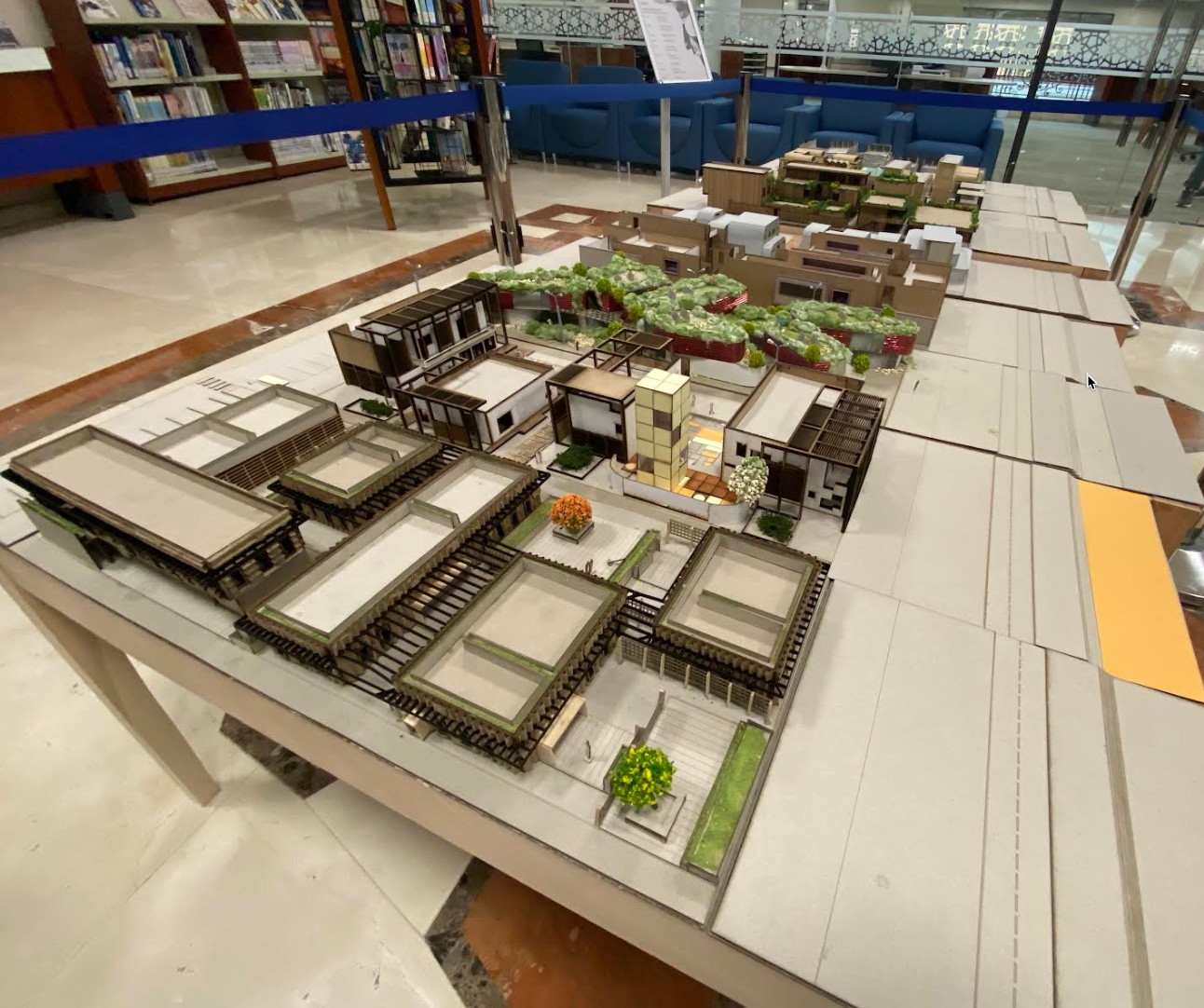Currently on display, we are showcasing student work in the library! Located in ‘The Foyer’ on the library’s First Floor, students enrolled in Professor Camilo Cerro’s ARC501 course in Fall 2023 designed a proposed urban low-rise sustainable co-housing residential project. Learn more about this dynamic work by our students!
Title: The Future of Dwelling: Co-Housing
Adaptability in the Time of Climate Change- Extreme Environment Studio

Abstract: Climate change goes beyond being an environmental crisis, at its root we are talking about a social crisis that compels designers to address issues of inequality. While every design has a social impact, not all design is socially focused. This is why a lot of the issues faced in the Anthropocene are connected to bad design. Nature is not at fault; the responsibility falls in humanity to design and engineer their way out of our present issues, and to find how technology can help us become more human while creating a more sustainable world. But how can we design for the future when the future we are designing for is a dystopia that design helped create?
Design has always been about looking forward in a linear way, naively thinking that tomorrow would be better than yesterday. As we stand facing unavoidable apocalyptic scenarios, can design show us through systemic interdependence to be resilient and adaptable, helping humanity become more versatile? These are the type of questions we will be asking at the Extreme Environments Studio. In Fall 2023, we looked at natural and technological ways to adapt to climate change at the residential level. The project explored methods for generating energy, producing of food and water, cleaning air and water, sequestering carbon, supporting biodiversity, and waste management allowing us to rethink the design process, and contribute positively to their local ecologies. While environmental sustainability is important, we also concentrated on social sustainability.
The pandemic has taught us the importance of community as a significant factor in shaping the future of urban development in the Middle East. So, the creation of community through social design is in its own way a type of social sustainability. With these ideas in mind our 500-level studio worked for a semester on proposing urban low-rise sustainable co-housing residential projects. The aim was to bring a version of this residential typology (co-housing) to the UAE, deconstruct it and adapt it into a model able to respond to the socio-cultural, environmental, and technological needs of the people that inhabit this region. Students worked in groups of two, developing urban planning, architectural and interior proposals. The projects worked towards developing a low-rise residential alternative for the UAE. For this to happen the design studio (ARC501) met with local developers, biodiversity experts, government officials and designers to discuss their ideas. Students visited a mangrove farm and the Jubail Mangrove Park to do field work around our design subject
The exhibit will be on display through the end of March 2024. You are welcome to visit the exhibit during library hours.
